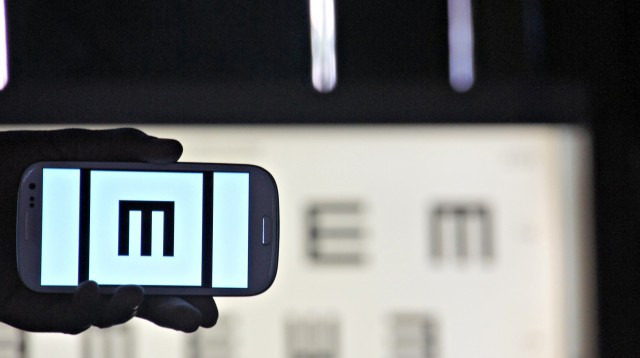
Blindness – the numbers are staggering; 39m people from around the globe are considered blind, with 80% having a condition that is either preventable or treatable with a known cure. Furthermore, 90% of sufferers are from low income areas. With this in mind Dr. Andrew Bastawrous, an ophthalmologist (eye surgeon), left the UK for Kenya to tackle the problem head on. This led to the creation of Peek, an innovative mobile eye examination kit which is extending the reach of traditional healthcare.
Kenya, one of the most affected areas, has 1 ophthalmologist for roughly 2-3 million people. These ophthalmologists are concentrated in major cities leaving the rural population massively underserved. So Bastawrous started collecting data through traditional eye examinations to understand the level of “new blind” within the rural communities. For this to happen he set up 100 different clinics in remote areas of Kenya. At times, this meant manually carrying heavy expensive equipment over long distances due to their being a lack of roads. Also making matters more difficult, was the lack of electricity, which meant power generators had to be hauled alongside the heavy equipment. What he found was that regions with poor infrastructure often had the biggest lines of patients for their services.
Thinking that there must be a better, way Bastawrous came across a man using an outhouse as a phone booth. To his surprise even with lack of roads, power, and access to clean water there was cellphone reception. It turns out that 80% of the population have access to mobile devises where only 50% have access to clean water!
With that in mind he proceeded to research every eye examination app on the market, and decided not one of them could tackle the problems he was facing in the field. The largest problems were that the system had to be easily and efficiently administered, all while being language neutral, to allow him to understand the root causes not just the symptoms. With this in mind, he put together a team led by Stewart Jordan, who as head of software development played a pivotal role in helping him build Peek.
In the initial stages, they set about creating a vision test that could be easily administered, and which could adapt to local languages. They achieved this by testing the direction of a character, rather than the traditional method of using letters. Instead of providing a numerical score, such as 20/20 vision, the app contextualizes the data to provide a better understanding of the level of visual impairment, as seen below.

The benefits of this are substantial. It not only easily shows the level of visual impairment, but reveals students who may have been wrongly labelled “slow learners” when they simply couldn’t see what was on the board.
Measuring vision is very important but understanding the root cause is key. To do this you have to see within the eye to the retina. This process is traditionally carried out with bulky expensive desktop cameras which simply was not possible, given the local infrastructure. Therefore, Peek partnered with Dr. Mario Giardini who was able to create a smartphone clip that provided comparable pictures at 1/50th the cost.

The team then focused on creating a support system to leverage the data in a meaningful way. To do this they are working with schools within Kenya. Teachers became empowered with this new technology, and can now administer the test to all students. The app now prompts the teacher to further collect more data on those who score poorly. Data is then relayed back to hospitals and schools which can now start building an accurate database of thenumber and scope of the visually impaired. This allows teachers to better serve affected students by moving them to the front of the class where they can see better, while they wait for proper care. Parents are notified via a personalized SMS, which outlines their child’s impairment issues and appropriate next steps to take. If action isn’t taken, parents are reminded with a follow up SMS. Using geolocation Peek can send out bulk SMS’s to many members of the community to remind them of when treatment will be available in their region. This helps to overcome the major hurdle for receiving care that geographic distance creates. Through his work, Bastawrous witnessed adherence to care in a random sample test almost triple, as a result of the support system he created. The Peek team are now working on a similar model for India, another heavily affected region.
After a successful Indiegogo campaign, which allowed the team to scale up its manufacturing, Peek Vision can now continue their mission of making high quality eye care available to everyone.
